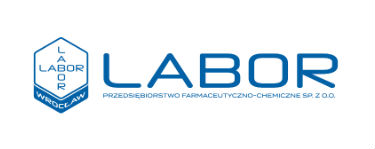Summary
The common cold is the most common infectious disease in humans. Common cold disease (viral nasopharyngitis; viral nasopharyngitis and sinusitis) is a set of clinical symptoms associated with inflammation of the nasopharynx and paranasal sinuses as a result of an acute viral infection.
The causative agent of colds can be over 200 different types of viruses (most often rhinoviruses and coronaviruses). Sick people are usually the source of the infection. The infection is spread mainly by airborne droplets. The incubation period of the viruses is usually 1-2 days. The greatest infectivity occurs in the first 3 days of the disease. Virus shedding extends for up to 2 weeks after symptoms appear.
The onset of the disease is usually mild, the initial symptoms (not always all of them are present) are usually sore or scratchy throat, headaches and muscle aches, general malaise, chills and usually mild fever, rhinitis, pharyngitis, cough. Symptoms usually resolve spontaneously maximum intensity of symptoms occurs after 2-3 days, then the disease disappears or symptoms disappear within 7-10 days. There are no effective methods of treating the causative agent of colds. In medical practice, only symptomatic treatment is usually used.
Echinacea preparations, especially complex preparations and alcoholic extracts, shorten the duration of symptoms by an average of about 1.5 days. Examples of such preparations are Echimunn tablets (containing 200 mg of Echinacea extract) or Echimunn C (containing, in addition to Echinacea extract, natural vitamin C derived from rosehip extract). If necessary, the patient is given painkillers and antipyretics, for example, paracetamol or acetylsalicylic acid.
Patients are advised to rest and drink plenty of fluids, especially during fever.
Pharmacological prophylaxis: : taking (from 8 days to 12 weeks) an Echinacea products (e.g Echimunn tablets and Echimunn C) may reduce the risk of developing the disease.
Cold
The common cold is the most common infectious disease in humans. Colds affect us very often and affect a very large part of the population.
In adults, this type of disease occurs up to four times a year, while the elderly suffer less frequently (it may be once a year). Children constitute a group particularly susceptible to colds, which is evidenced by the fact that in this group cases occur up to three times more often than in adults.
Common cold disease (viral nasopharyngitis; viral nasopharyngitis and sinusitis) is a set of clinical symptoms associated with inflammation of the nasopharynx and paranasal sinuses as a result of an acute viral infection.
The causative agent of colds can be over 200 different types of viruses: most often rhinoviruses, coronaviruses, influenza and paralytic influenza viruses, less frequently RS viruses, adenoviruses and enteroviruses (eg. Coxsackie).
After viruses enter the epithelial cells of the upper respiratory tract, their replication begins, causing local inflammation, which leads to the expansion of blood vessels (swelling, discharge), increased secretion of the mucosa glands, and sometimes damage and peeling of the epithelium.
Sick people are usually the source of the infection. The infection is spread mainly by airborne droplets. It is also possible to become infected by direct contact and, depending on the type of virus, by ingestion.
The incubation period of the viruses is usually 1-2 days. The greatest infectivity occurs in the first 3 days of the disease. Virus shedding extends for up to 2 weeks after symptoms appear.
The onset of the disease is usually mild and the initial symptoms (not always all of them are present) are usually:
- sore or scratchy throat, headaches and muscle aches, generally feeling unwell,
- chills and fever (usually mild), sometimes infection is without fever,
- rhinitis – initially a run-off of watery secretion, also running down the back of the throat, then a stuffy feeling and nasal obstruction, impaired smell, sneezing; later, the discharge may be thick, greenish, and even purulent (this is not evidence of a bacterial infection),
- pharyngitis – pain, redness, inflammatory lumps on the back of the throat, sometimes lumps or vesicles on the palatine arches, discharge on the back of the throat,
- cough – initially dry, with time turning into wet,
- occasionally, patients may develop conjunctivitis (with adenovirus infection) and skin rash usually caused by adenoviruses and enteroviruses.

Symptoms usually resolve spontaneously, maximum intensity of symptoms occurs after 2-3 days, then the disease disappears or symptoms disappear within 7-10 days. However, in some patients the cough may last up to three weeks.
The diagnosis is usually made by the physician on the basis of an interview and physical examination. As the disease is usually mild, no additional examinations are needed.
Differential diagnosis:
- acute pharyngitis of a different etiology, mainly streptococcal,
- bacterial sinusitis – on the basis of clinical symptoms it is difficult to distinguish infections (in nearly 90% of colds, abnormalities in the x-ray imaging tests of the sinuses are also found),
- flu, laryngitis, bronchitis and pneumonia,
- non-specific initial symptoms of many infectious diseases (for example, smallpox, measles, mumps, whooping cough),
- prolonged symptoms of allergic rhinitis.
Treatment
There are no effective methods of the causative treatment of colds.
In medical practice, only symptomatic therapy is usually used.
Echinacea preparations, especially complex preparations and alcoholic extracts, shorten the duration of symptoms by an average of about 1.5 days. Examples of such preparations are Echimunn tablets, containing 200 mg of Echimunn(Echinacea extract) or Echimunn C containing, in addition to Echinacea extract, natural vitamin C derived from wild rose extract.
If necessary, in addition drugs are used to reduce the congestion of the nasal mucosa and sinuses, or a NaCl solution for the nose (isotonic or hypertonic [2.5-3%, sea salt preparations]), as well as analgesics and antipyretics, for example paracetamol or acetylsalicylic acid .
Patients are advised to rest and drink plenty of fluids, especially during fever.
Complication of viral infection may be bacterial sinusitis, bacterial otitis media (especially in children), bacterial pneumonia (elderly people). In such a situation, antibiotic therapy should be started if necessary.
Prophylactic use of an antibiotic during a cold does not reduce the risk of these complications.

Methods of prevention
Due to the large number of pathogens that can cause colds, there are no protective vaccinations against colds.
Pharmacological prophylaxis: taking (from 8 days to 12 weeks) an Echinacea preparation (e.g. Echimunn tablets and Echimunn C) may reduce the risk of developing the disease.
Isolation of sick people slows the spread of infection.
Basic personal protection measures: hand hygiene after contact with a sick person and moderate, regular physical effort reduce the incidence of viral infections.
AUTHOR: Dr n. farm. Andrzej Tarasiuk




